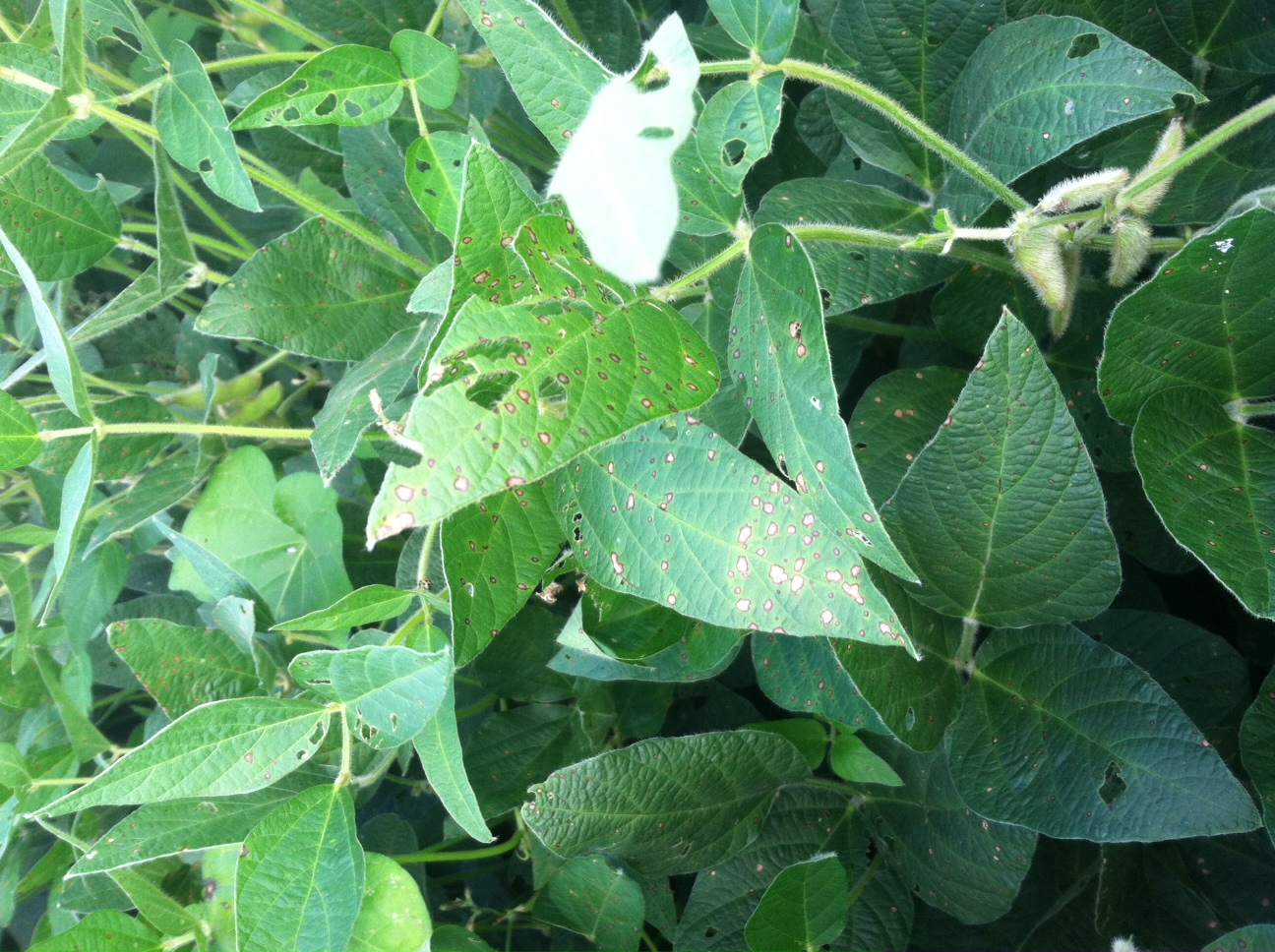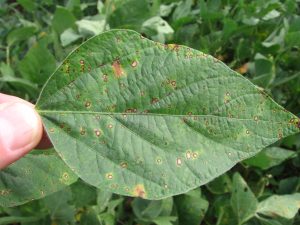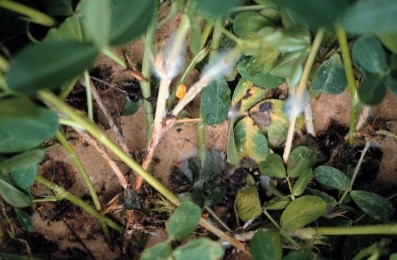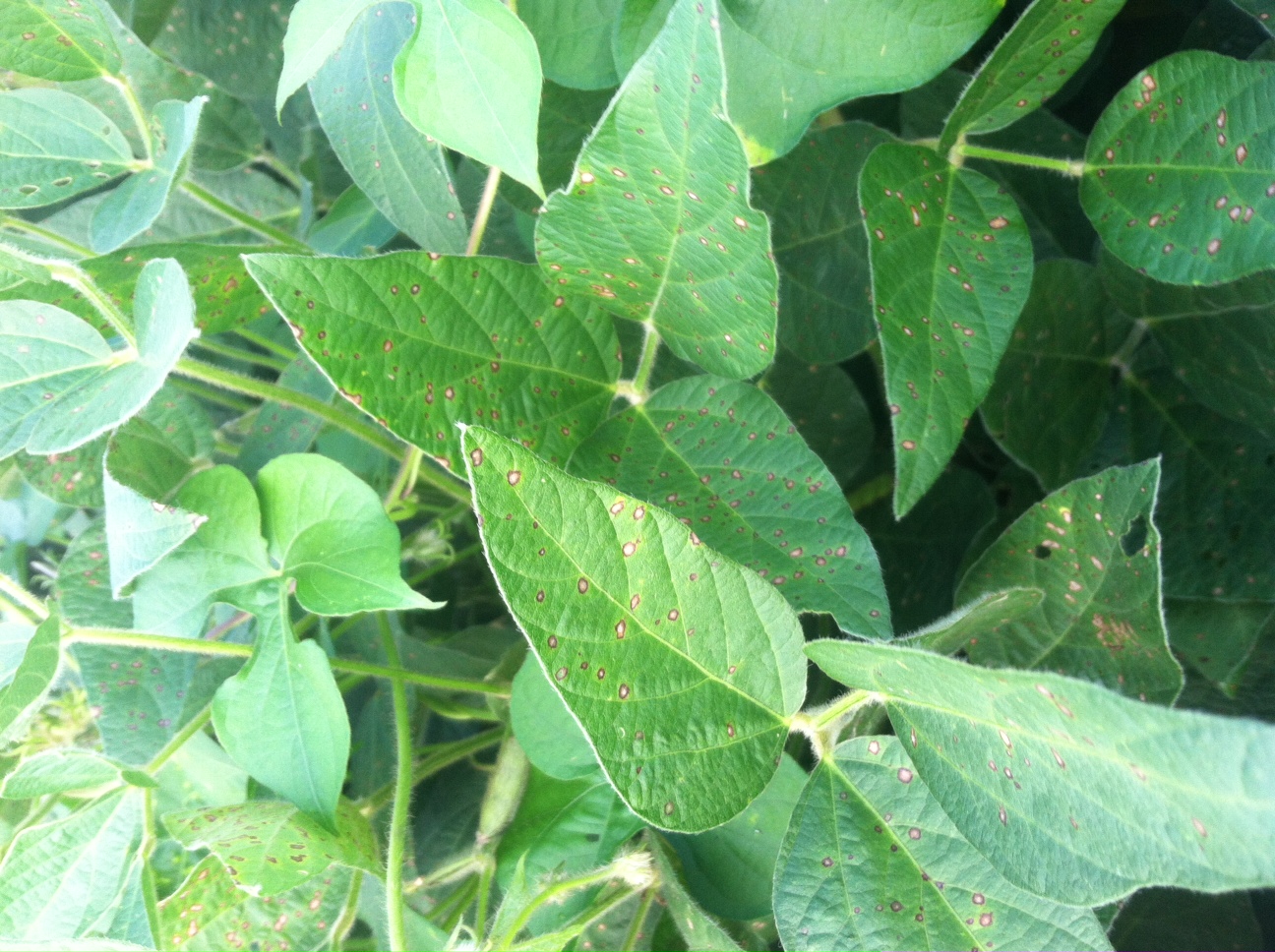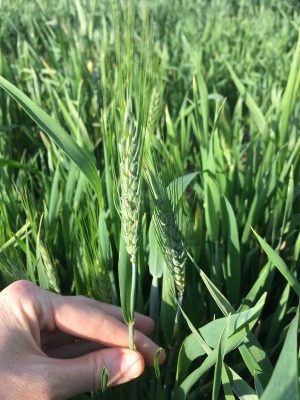David Holshouser, Soybean Agronomist & Hillary Mehl, Plant Pathologist
We appreciated the rainfall this year. It should lead to some very good yields in many parts of Virginia. However, the same weather conditions for high yields has led to some of the worst seed quality that we’ve ever experienced. This is in addition to the pod splitting and seed sprouting that we began observing last month.
We began seeing extremely poor seed quality in our May-planter maturity group (MG) 3 soybean in our Orange variety test last week. The early MG 4 soybean did not look much better, but they were not yet mature.
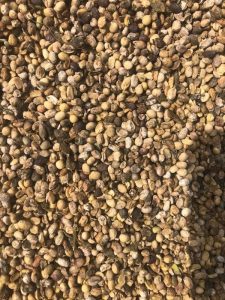 The photo on the left is the worst that has been called to my attention. These are April–planted early MG 3 soybean from Madison County. To use the farmer’s words, “A real kick in the stomach.” Soybean in this shape are pretty much a total loss. It is especially hard when the yield potential was outstanding.
The photo on the left is the worst that has been called to my attention. These are April–planted early MG 3 soybean from Madison County. To use the farmer’s words, “A real kick in the stomach.” Soybean in this shape are pretty much a total loss. It is especially hard when the yield potential was outstanding.
Below are photos from Westmoreland and Dinwiddie counties showing similar results. We are not seeing the same problems in our May-planted MG 4 soybean in Suffolk, but are seeing quite a bit of purple seed stain in some varieties.
So, what caused this? From these photos, we are seeing signs of several diseases, including Phomosis/Diaporthe, Cercospora, and anthracnose just to name a few. However, we have not yet confirmed the diseases – samples are on the way to the Tidewater AREC’s disease lab.
But that is just the possible diseases. What caused the disease to be so bad?
I think that we can blame it largely on excessive rainfall (and many rainfall events) and a very warm September. Most of the seed diseases come on strong during maturation; hence, our early MG soybean, especially those planted in April and early-May experienced those conditions.
Below is a weather summary from the month of September in Orange County, showing 2018 and long term average temperatures and accumulated precipitation. Notice the high rainfall, especially during the latter part of the Month, when our MG 3 and early-4 soybean were maturing. Secondly, notice the temperatures during that same time period. This set up nearly perfect conditions for many seed diseases to form.

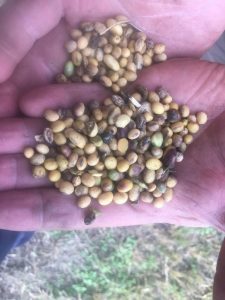
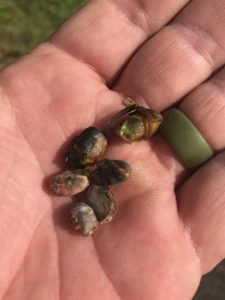
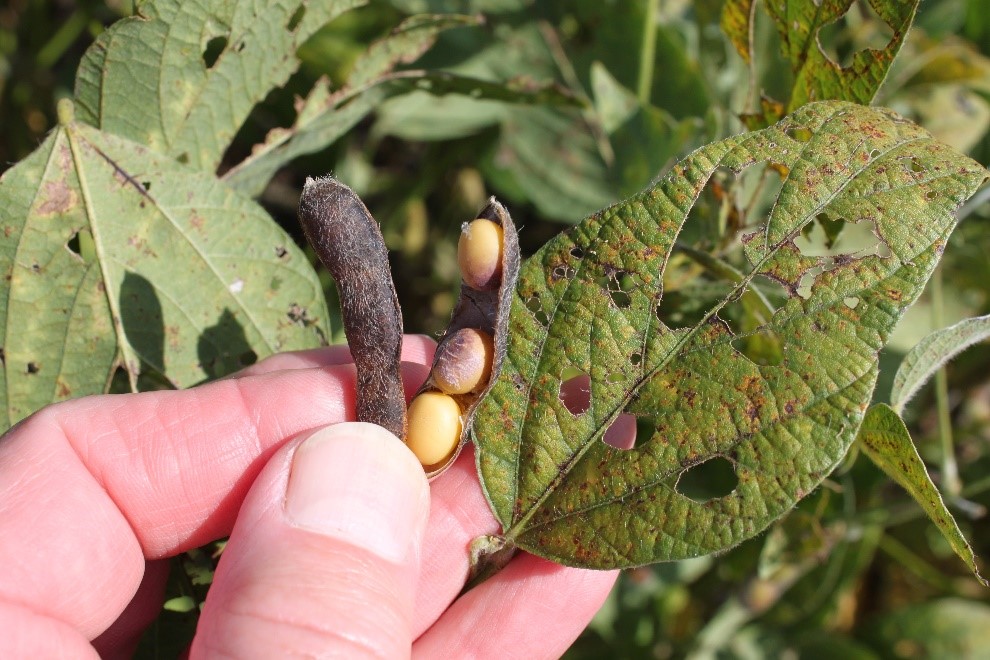
What can we do about it? Unfortunately, we cannot control the weather. And what we have done this year cannot be undone. But, here are a few pointers for that may help this and in future years.
- Harvest as soon as possible after soybean are mature. The diseases will only continue to grow and develop. If you have drying capability, harvest at a little higher moisture and dry it down to 13%.
- Plant varieties best adapted to your farm(s). While you have discovered (and heard me – David – say) that early-planted early-maturing varieties have very good yield potential if we have a cool and wet July and early-August (not the normal), there is always the risk of poor seed quality. Only if September is cooler than average and rainfall is not excessive will this system give us good quality seed. Year in and year out, May-planted late-MG 4 and MG 5 soybean are our best overall choice. Also, it is rare that double-crop soybean have poor seed quality.
- Select disease resistant varieties. Most companies do not list resistance to many of our seed diseases, but we have seen differences in varieties. Look over our final soybean variety test results for more information on seed quality scores and purple seed stain ratings.
- Select disease-free varieties. Next year, notice your seed quality. While most companies will not bag disease-ridden seed, some could sneak through. Seed treatments may be in order.
- Minimize insect damage to pods. Though not necessary for infection, insect damaged pods are more likely to be colonized by fungal pathogens.
- What about foliar fungicides? We have not found that foliar fungicides can overcome warm and wet conditions during seed maturation, especially when applied to the R3 stage. Will a later application help? That is hard to say. In some cases, applying a fungicide at R5 will improve seed quality, but this is not a sure thing and a yield is unlikely to be improved with later applications.



